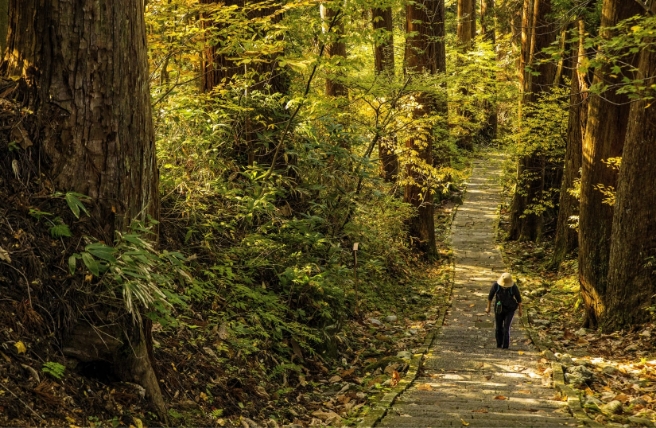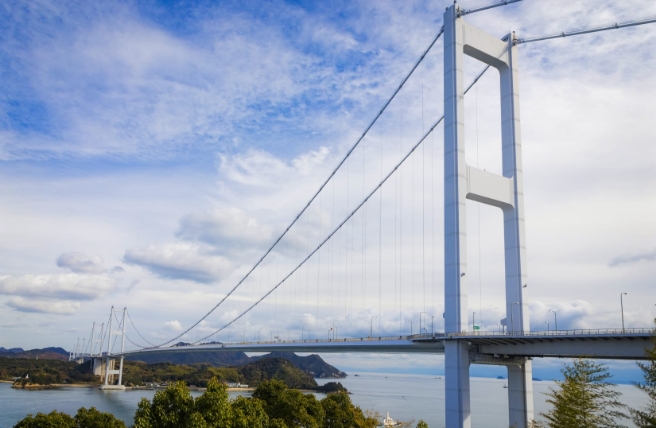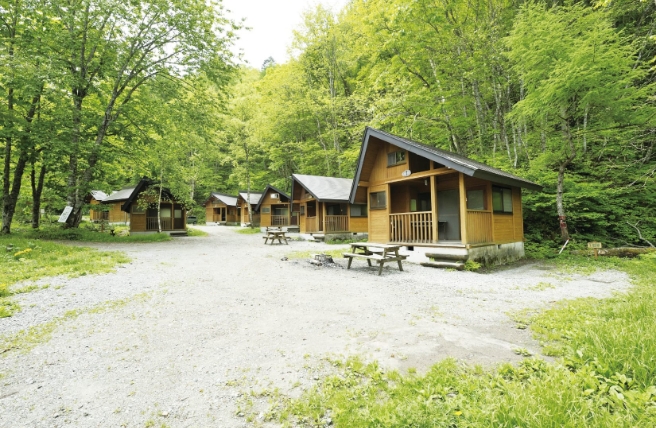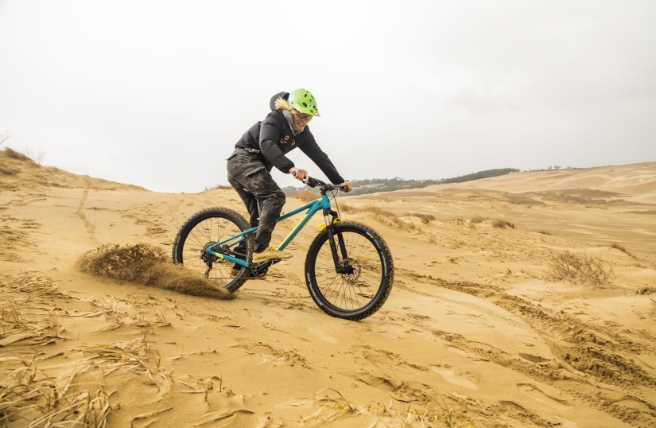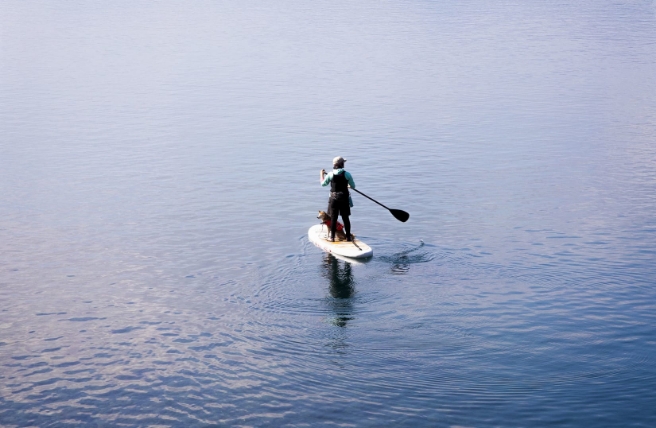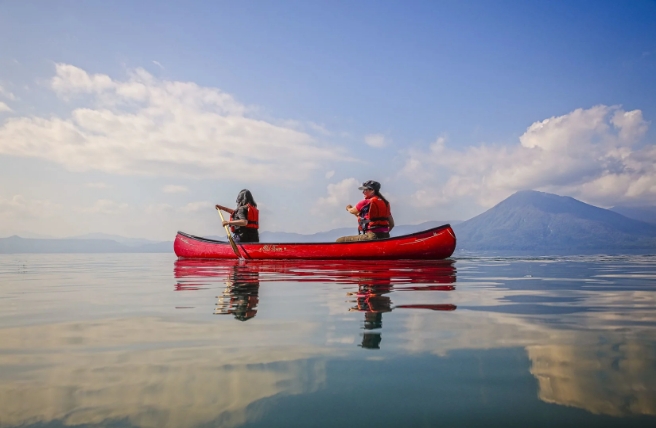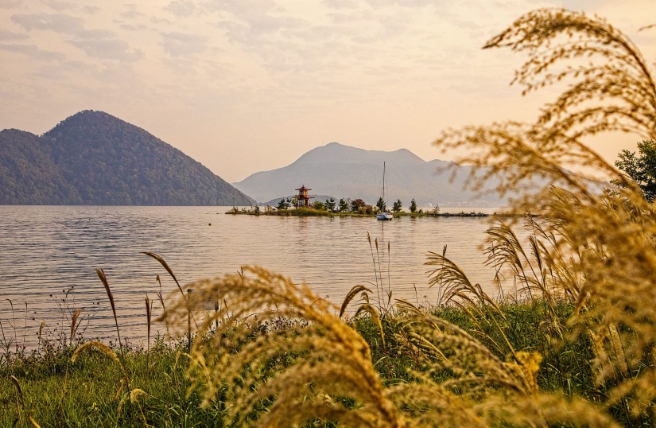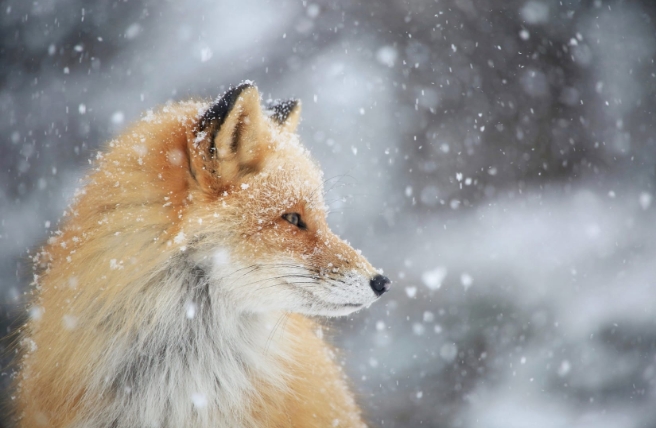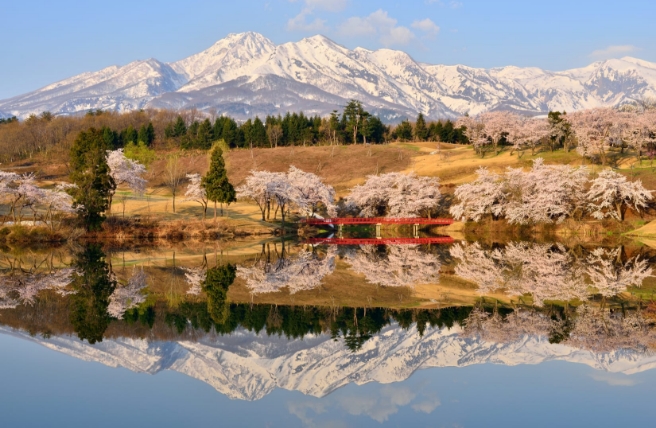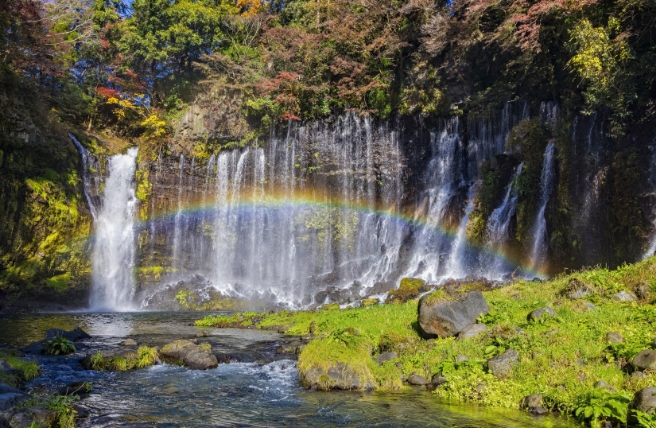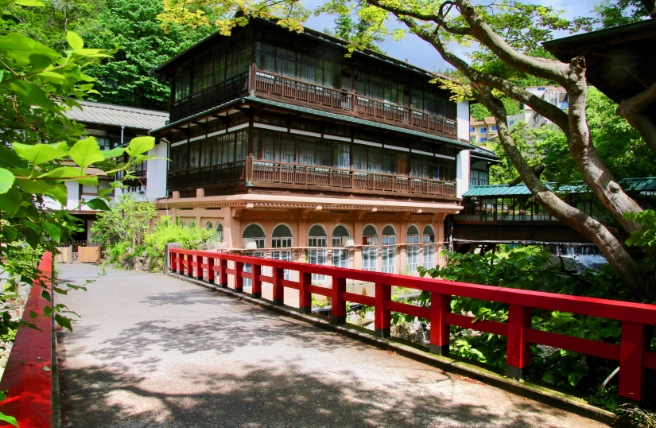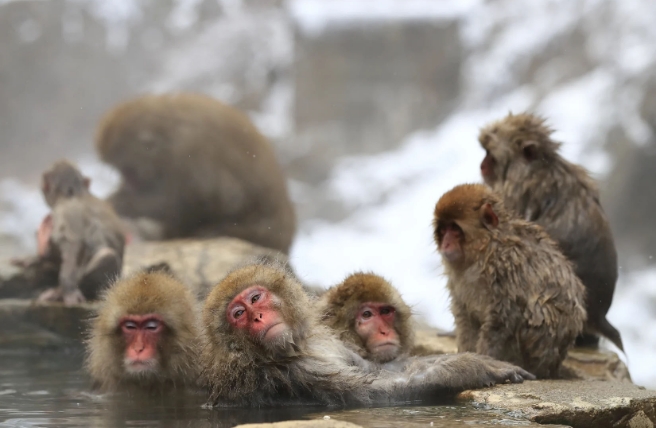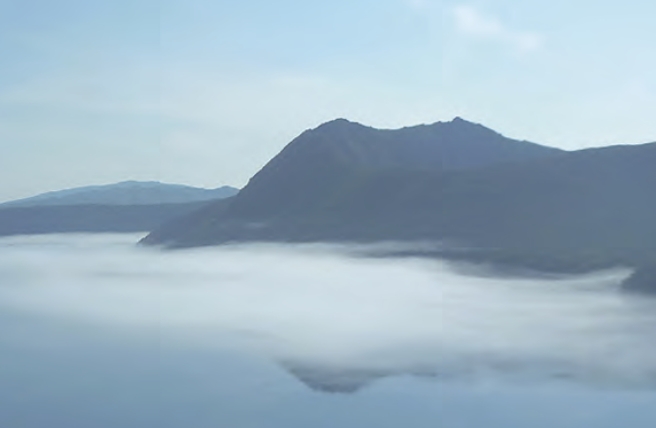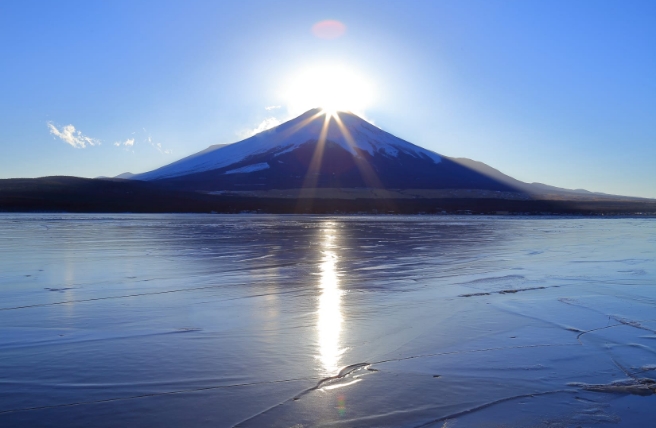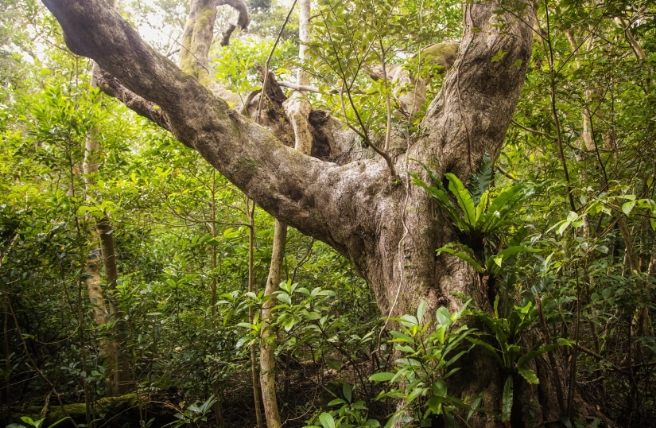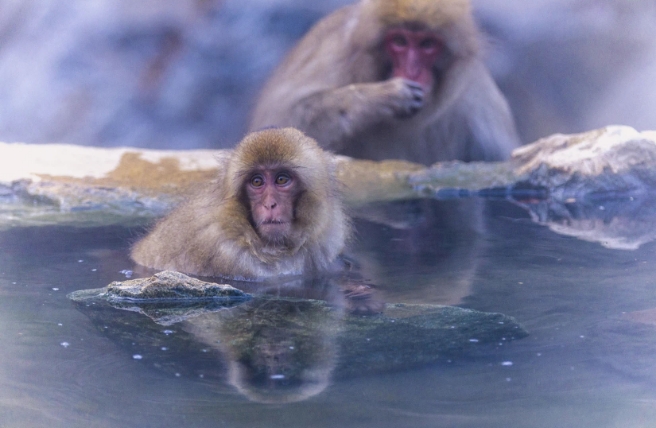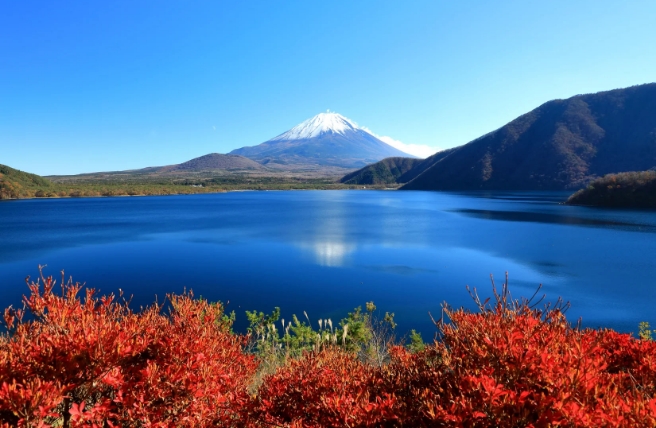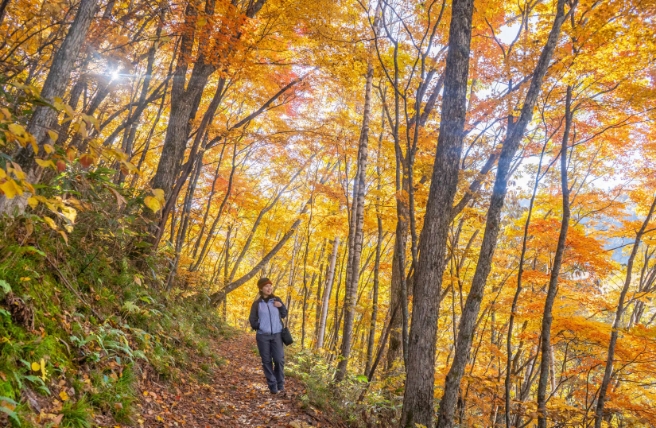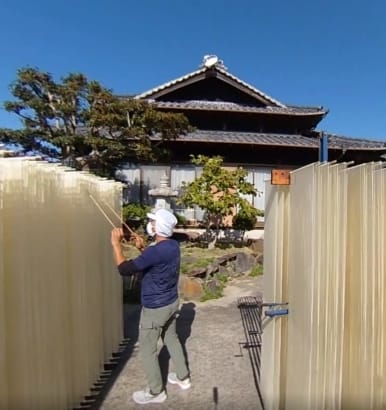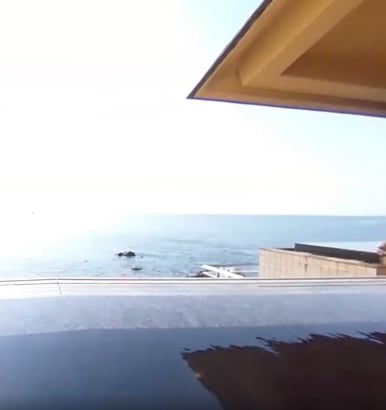
Fat-bike tours on the dunes
San’inkaigan National Park
Iconic landscapes and exhilarating ocean activities
San’inkaigan National Park covers 75 kilometers of coastline from Kyoto to Tottori. It includes swirling sand dunes, sheltered inlets with invitingly clear waters, and dramatic rock formations eroded over time. The Tottori Sand Dunes at the western end of the park offer sprawling sandscapes formed by the wind. Head to the Tottori Sand Dunes Visitor Center to learn about mysterious sand patterns, the dune's plants and animals, and tips on how to explore the dunes on foot. Explore the dunes through activities such as paragliding, sandboarding, guided fat-bike tours, and sunset yoga.

Sandboarding on the Tottori Dunes
The white sands and emerald waters of Takeno Beach in the eastern part of the park make it popular for swimming and snorkeling. Visit the Takeno Snorkeling Center to see colorful dioramas introducing the area’s marine life, and join snorkeling excursions to explore tide pools or sea kayaking tours around Takeno’s rugged rock formations. Yuhigaura Beach, further east along the coast, is famous for its sunsets, and tour operators offer stand-up paddleboard experiences. Kinosaki Onsen is an ideal base for exploring the eastern part of the park, conveniently located between both beaches. While at Kinosaki Onsen, consider visiting Genbudo Cave Park, to take a tour of five basalt caves with distinctive columnar jointing, or stop by the Hachigoro Toshima Wetlands to observe wild storks.
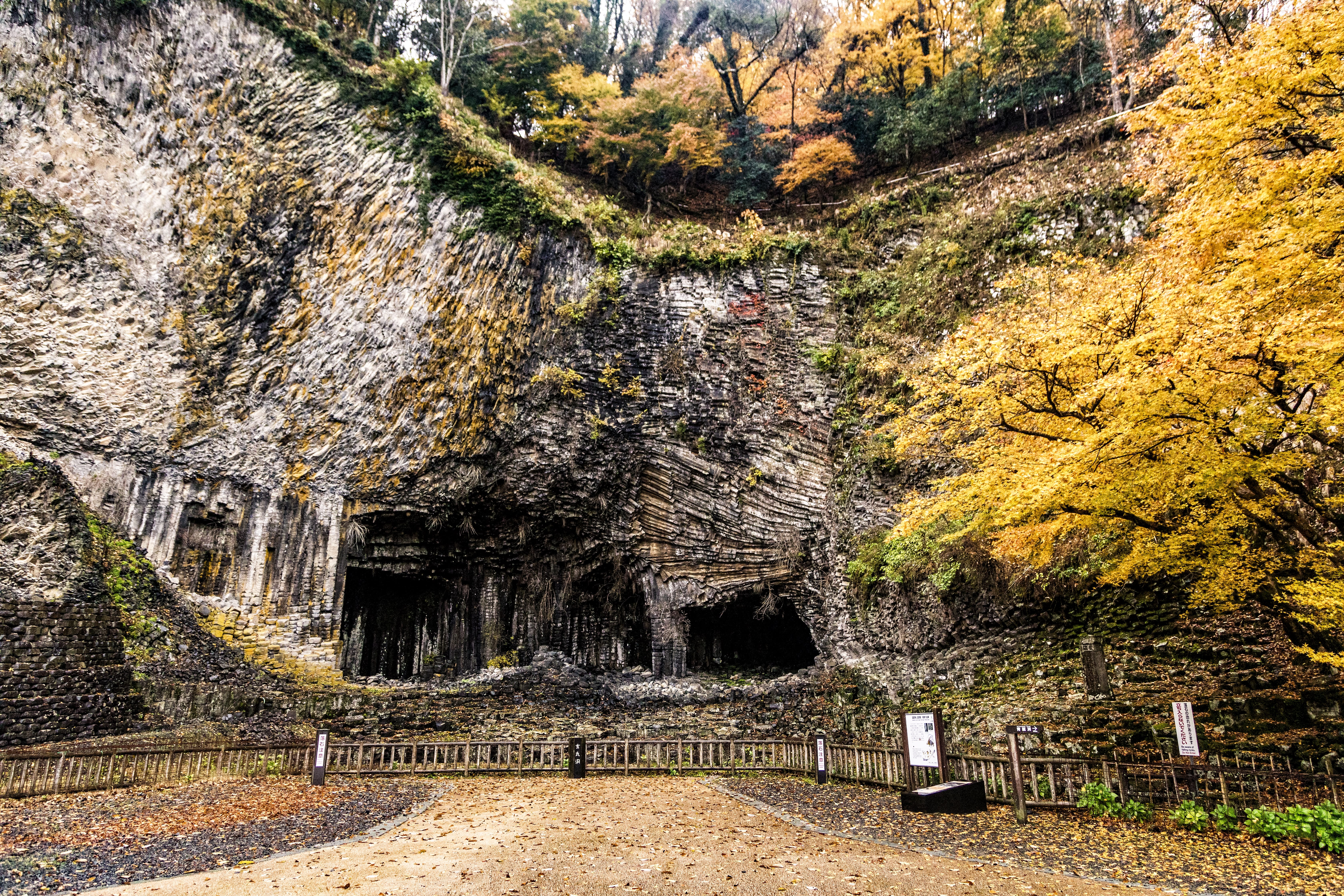
Genbudo Cave Park
Overnight onsen—soothing hot-spring stays
Enjoy stays at a range of accommodation such as traditional ryokan inns or minshuku—family-run guesthouses that typically feature tatami-mat flooring and futon bedding, and serve home-cooked meals. Kinosaki Onsen is a 1,300-year-old hot-spring town, around three hours from Kyoto and Osaka. Enjoy kimono strolls in geta (Japanese wooden clogs) along the river bank lined with weeping willow trees and traditional Japanese homes, or stop by the old-school Taniguchiya Arcade to enjoy retro Japanese games such as target shooting. Relax and soak in Kinosaki Onsen’s seven public hot springs, each with its own unique history and atmosphere. The bathhouses are all within walking distance from each other and some have open-air baths and saunas. There are other hot springs on the western side of the park, near Tottori Station and Hamasaka Station. Unwind in an open-air bath at a ryokan inn, and enjoy traditional Kaiseki cuisine, a multicourse meal, featuring fresh, local seafood and Tajima Beef.
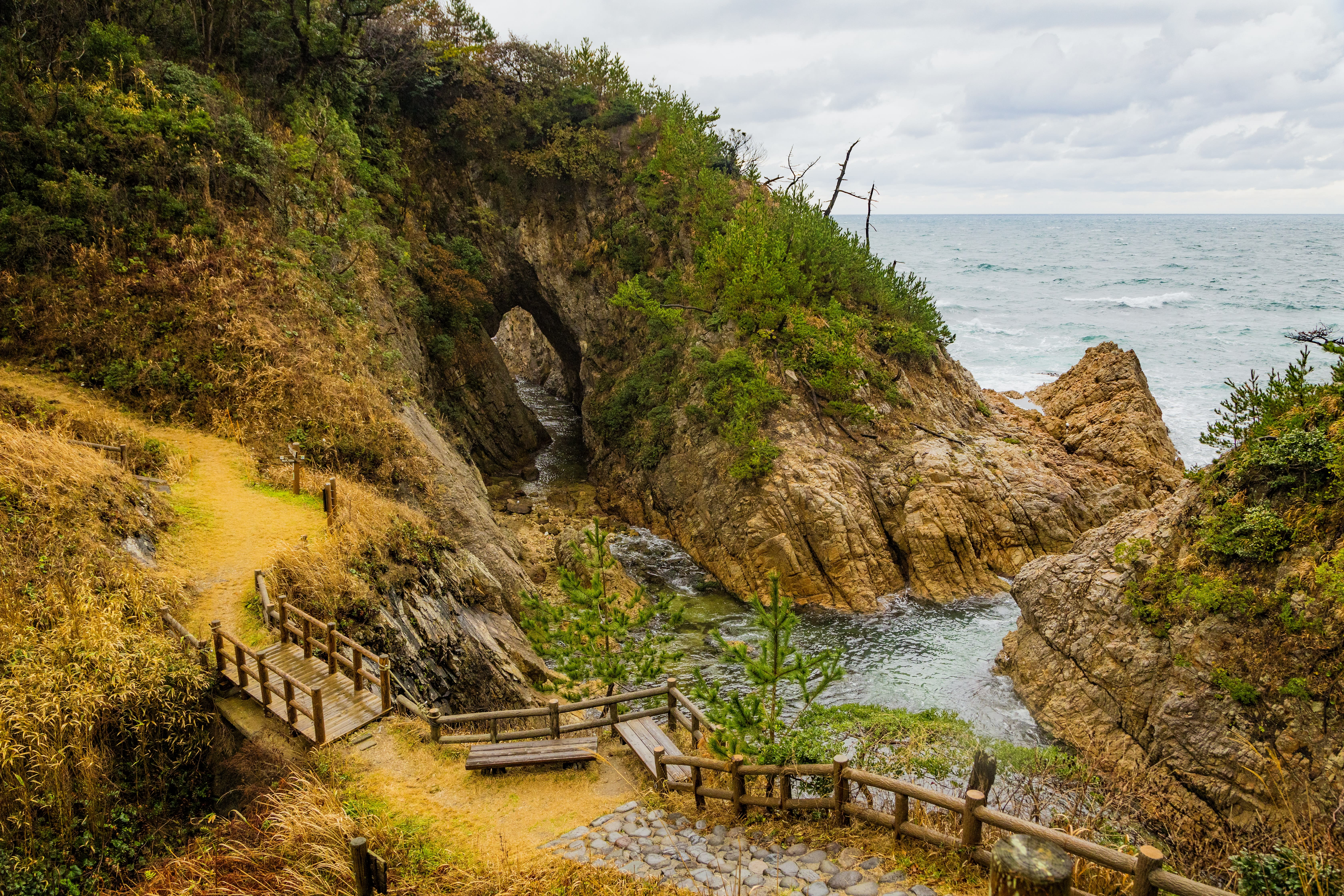
Mizujiri Cave Gate
Getting to San’inkaigan National Park
San’inkaigan National Park is accessible by train from Kyoto or Osaka on the JR San’in Main Line from Kyoto Station, Shin-Osaka Station, or Osaka Station. It takes approximately 2 hours and 30 minutes from Kyoto Station to Toyooka Station (Hyogo Prefecture) on the east side of the national park, and 4 hours from Shin-Osaka Station to Iwami Station (Tottori Prefecture) on the west side. Bus services and local trains, although limited, operate along the coast for journeys within the park. Trains on the San’in Main Line going from Kinosaki Station to Tottori Station take approximately 2 hours 30 minutes.
Setonaikai National Park
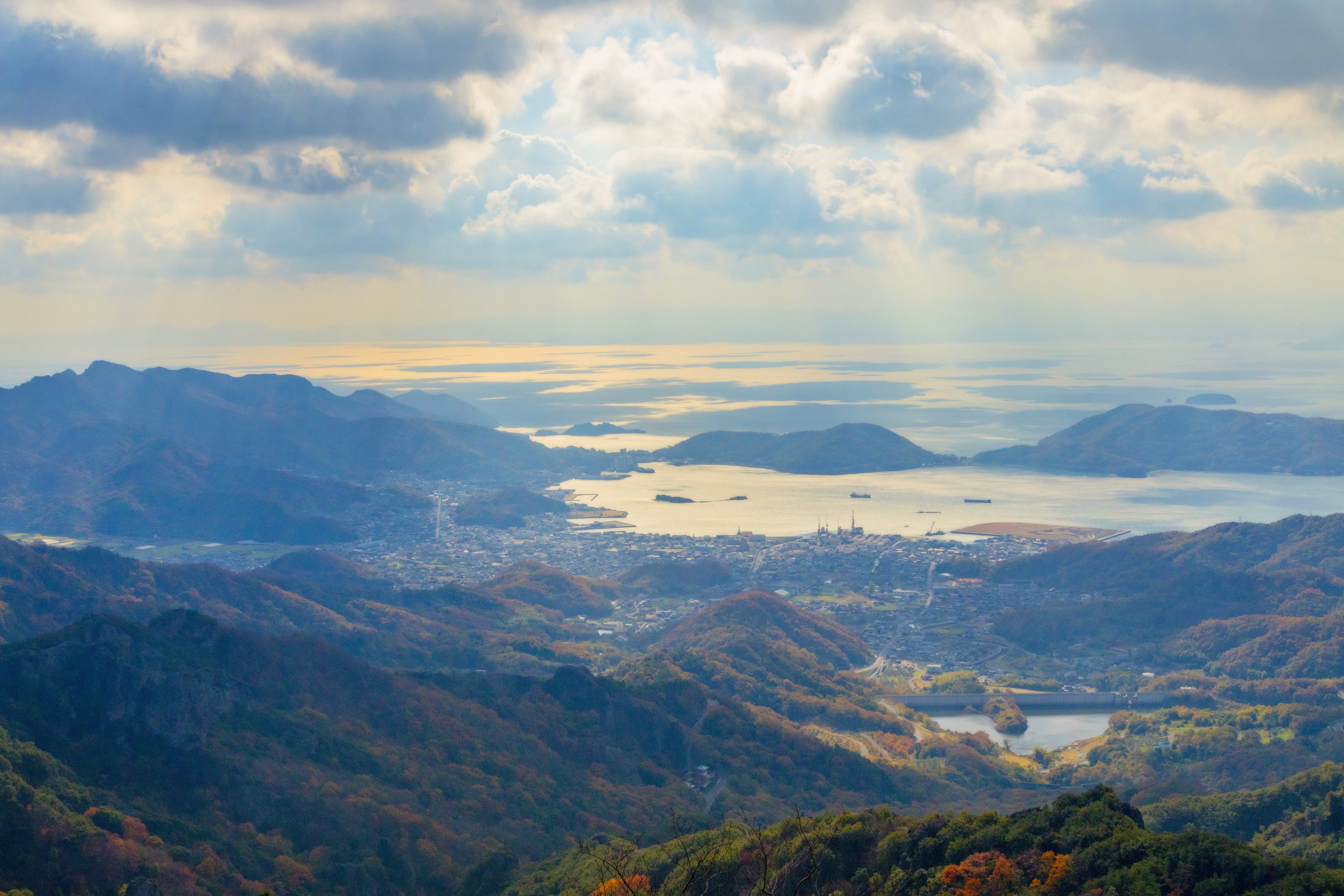
Sweeping views of the Seto Inland Sea from Kankakei Gorge
Tour the islands of an idyllic inland sea
Setonaikai National Park is the first and largest national park in Japan—home to diverse landscapes from white sand beaches to dense pine forests. The park covers much of the Seto Inland Sea, which separates Honshu, Kyushu, and Shikoku—three of Japan’s main islands. Take to the seas and enjoy the islands within Setonaikai National Park through a range of activities. A chartered boat tour of these islands offers sweeping seascapes and beautiful sunsets. Guides will introduce the nature and history of the islands and cater to any requests for stops along the way. One-day chartered tours of Shodoshima, the second largest of the Seto Inland Sea islands, typically begin with a kayak tour, and include guided walks, drives, and customizable activities such as local farm experiences. In the western part of the Seto Inland Sea on Miyajima Island in Hiroshima Prefecture, Itsukushima-jinja Shrine is dedicated to the goddess of the sea. See the shrine's iconic red torii gate from a different angle on a sea kayaking tour of the waters that surround it at high tide.

Setonaikai Angel Road
Sleeping under the stars
Experience luxury in the outdoors with glamping stays on the park’s islands. Enjoy spacious accommodation under the stars and outdoor barbecue dinners featuring local seafood and island-grown vegetables. Kujirajima is an island in Okayama Prefecture, within the boundaries of the park. The uninhabited island has a campsite that only welcomes one group per day. Get away from it all with enchanting experiences such as stargazing and sunset sailing. Kujirajima has glamping tents with tent saunas and cozy cottages with outdoor decks to accommodate even large groups.
Getting to Setonaikai National Park
A large network of passenger ferries make it easy to hop between the Seto Inland Sea islands. To get to Shodoshima Island, take the JR Kobe Line from Osaka Station to Sannomiya Station (30 min). Then, transfer onto the Kobe Ferry Bus to Kobe Port. The Kobe Shodoshima Jumbo Ferry operates multiple ferries per day between Kobe and Sakate Port on Shodoshima Island, and takes approximately 3 hours and 30 minutes.
Miyajima Island, located in Hiroshima Prefecture, is accessible from both Shin-Osaka Station (1 hour and 30 min) and Kyoto Station (1 hour and 40 min). Take the JR Tokaido-Sanyo Shinkansen to Hiroshima Station, and transfer onto the JR Sanyo Main Line to Miyajimaguchi Station. Miyajimaguchi Pier is right next to the station, and it’s only a ten-minute ferry ride to Miyajima Island.
Kujirajima is located in Okayama Prefecture—a 30 minute shuttle boat ride from Uno Port. Uno Port is a five-minute walk from Uno Station, which is approximately two hours by train from either Kyoto Station or Shin-Osaka Station.

A cruise around the whirlpools of Naruto Strait
Yoshino-Kumano National Park
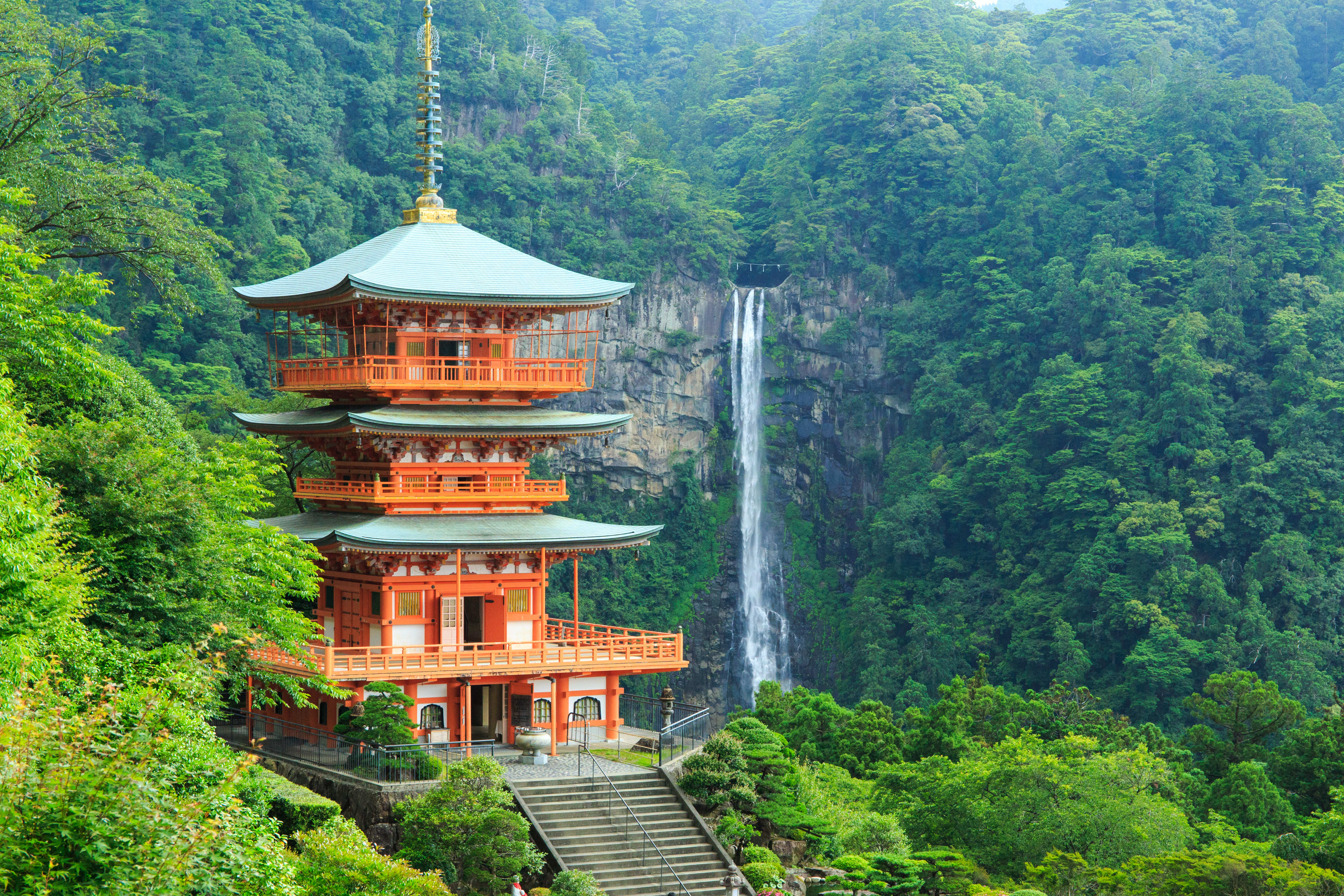
Nachi Falls
Soulful experiences in sacred mountains
Nature and spirituality entwine at Yoshino-Kumano National Park, which covers pockets of the Kii Peninsula. A network of pilgrimage routes traverse the peninsula and lead through the boundaries of the park, connecting sacred sites with a long history of worship. Walk sections of these trails through thick evergreen and broadleaved forests ideal for forest bathing. Expose yourself to healing negative ions and explore ancient shrines and temples near Nachi Falls, in the southern reaches of the park. The thundering waterfall has a 133-meter cascade and is shrouded by primeval forests. Discover local legends and the rich history of the pilgrimage routes on a private ecotour along part of one of the trails. Several courses are available to choose from.

The pilgrimage trails of Kumano Kodo
In the western reaches of the park, in Mie Prefecture, avid hikers can join a two-day, guided tour of Osugidani Valley, a designated Special Protection Zone within Yoshino-Kumano National Park. The tour takes hikers along craggy cliffs over emerald river waters and through forests with towering cedars. The Yoshino-Kumano National Park covers many different parts of the Kii Peninsula, including some of its coastline. Many local tour operators offer ocean activities such as snorkeling, diving, and sea kayaking, as well as geotours, hiking, and other forest experiences.

Osugidani Valley
Relaxing stays in quaint hot-spring hamlets
A relaxing way to experience the Yoshino-Kumano National Park is to stay in one of the many hot-spring villages within its boundaries. The Kumano Hongu Onsen Village is convenient for visitors walking sections of the pilgrimage trails through the Kii Mountains and gives easy access to Kumano Hongu Taisha, one of the main worship sites in the Kumano region. The onsen village is divided into three areas, each with different accommodation options: Kawayu Onsen, on the Ohtou River, has guesthouses and traditional inns as well as open-air riverside bathing options; Wataze Onsen, has quaint cottages and campsites, but the bathing options are a little limited; and Yunomine Onsen is a charming street lined with traditional ryokan and several public bathhouses. Accommodation is plentiful in coastal parts of the park, and seaside towns like Kii-Katsura, Shirahama, and Taiji also have hot-spring options.

Kumano Hongu Taisha
Getting to Yoshino-Kumano National Park
The Yoshino-Kumano National Park covers pockets of Mie, Nara and Wakayama prefectures, and the best transport option will depend on the part of the park you choose to explore.
Kii-Tanabe Station in Wakayama Prefecture is a convenient transport hub for journeys to Kumano Hongu Taisha, Kumano Hongu Onsen Village, and pilgrimage routes leading east into the mountains. It is 2 hours and 30 minutes by JR express train from Shin-Osaka Station. Some JR express trains from Shin-Osaka Station also run via Kii-Tanabe Station along the coast to the southeast of the peninsula.
For Mount Yoshino and sacred sites there such as Kinpusenji Temple, you will need to change trains at Kashiharajingu-mae Station and alight at Yoshino Station. From Kyoto, the total journey takes 1 hour 50 minutes.
For Odaigahara, buses run from Kashiharajingu-mae Station and stop at the Odaigahara Visitor Center. The bus journey takes 2 hours and 45 minutes. From Kyoto, the train ride to Kashiharajingu-mae Station takes 55 minutes.
For trips to the Osugidani Valley, take a hiking trail from the Odaigahara area or approach from Misedani Station, which is in Mie Prefecture. Misedani Station can be reached from either Shin-Osaka or Osaka Namba stations. If using a JR rail pass, take the Tokaido Shinkansen from Shin-Osaka Station to Nagoya Station (50 min). From there, change to a Limited Express train bound for Kii-Katsuura and travel to Misedani Station (1 hr 40 min). If not prioritizing JR lines, take the Kintetsu Limited Express from Osaka Namba to Matsuzaka (1 hr 35 min). From there, change to a Limited Express train bound for Kii-Katsuura and travel to Misedani Station (30 min). From Misedani Station, visitors must connect to a bus service (reservation required) that leaves from Michinoeki (Roadside Station) Okuise Odai, a ten-minute walk from the station. The bus ride takes 1 hour and 30 minutes to Osugidani Tozanguchi.
Consider renting a car or chartering a sight-seeing taxi for added convenience and to maximize your time. The geography of the park makes it difficult to visit multiple areas by public transport, especially if on a tight schedule.

Cherry blossoms on Mount Yoshino
